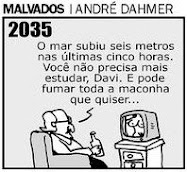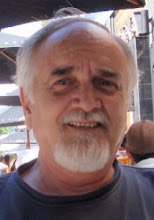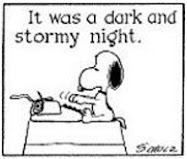maybe Thomas Braidwood will have something to say "by the fall," say, October 14? that would be two years ... two years of travail which could have been made unnecessary by the merest display of honour by any single one of the RCMP goon squad, that's to say any one of the some 25,000 of them walking around, disgraceful!
meanwhile, in late June there will be "final submissions" by Ravi Hira and David Butcher and Reg Harris and Helen Roberts, and such like dishonourable maggots in defence of their dishonourable maggoty client viz. the Government of Canada in its daemonic incarnation as the RCMP, not clear if this folderol will be published with the Braidwood Site transcripts
Taser inquiry testimony ends, Stunning attitude, Police could have avoided inquiry - lawyer.
speaking of maggots, here's another one, Grant Fredericks, a "forensic video expert," another Taser International shill spinning desperate and far-fetched lies and fabrications to shore up the official RCMP lies, pardon me, LIES(!):





Fredericks is closely associated with LEVA (Law Enforcement & Emergency Services Video Association), who count among their Corporate Sponsors (surprise, surprise), Taser International, Inc., well to remember that some people will say anything if you pay them, this Grant Fredericks fellow is not only an "expert" but is apparently "a pioneer in forensic video analysis," you can watch him lying at the CBC Dziekanski site, Thomas Braidwood, God bless his heart, does not seem to be buying what the BBB (baffle-their-brains-with-bullshit) crowd are selling
and thank goodness that there is the odd honourable one in the bunch, here is Mike Webster's recent letter to the Braidwood Commission: (I have posted his previous testimony here: Braidwood Transcript)




April 17,2009
Braidwood Commissions of Inquiry
Art Vertlieb QC
Commission Counsel
980-T500 West Georgia Street
Vancouver, B.C.
V6G 2Z6
Dear Mr. Vertlieb,
You have asked me for my opinion in the case of the death of Robert Dziekanski that is before the Braidwood Commissions of Inquiry. I am a Registered Psychologist (in private practice) that has worked in the area of police psychology for over 30 years. I completed basic police training at the RCMP Training Academy (Depot Division) in 1988. I specialize in the area of crisis management and have experience in the application offeree across a broad array of police tasks including: hostage/barricade incidents; kidnappings; incidents of public disorder; and crisis intervention. I have been instrumental in the creation and delivery of crisis intervention, crisis negotiation, and incident command courses from the Canadian Police College (Ottawa, Ontario) to the B.C Police Academy (New Westminster, B.C.). I have been an adjunct lecturer at the FBI 'Gaining Academy. I have consulted internationally with several law enforcement agencies including: Colombia, Mexico, Singapore, Brazil, the United Arab Emerates, Hungary, Iceland, Sweden, Australia, and Europol. I have consulted operationally at a variety of incidents including: the old BC Penitentiary (hostage takings); Waco, Texas; Gustafsen Lake, B.C.; Jordan, Montana; Ft. Davis, Texas; the G8; the G20; Apex Alpine; and numerous kidnappings from Iraq to Indonesia, and Kashmir to Colombia. I am familiar with both Use of Force Models; the RCMP's Integrated Model of Incident Management and the National Use of Force Framework.
In forming my opinions I have reviewed the following materials:
• Transcripts on 2 dispatch calls (DRIP Dl 3.WAWD RIP D I 5.WAV)In my opinion the RCMP members mishandled this call and responded inappropriately in the following ways:
• Transcripts on hearings dated February 23, February 24, February 25, February 26, March 2, March 3, and March 4; and, March 23, March 24, and March 25 2009
• Robert Dzfekanski - Circumstances; and,
• The Pritchard Video and enhanced audio by Sharpe.
i. Only "Fools Rush In"Thank you for consulting me on this matter. I hope these opinions will be of assistance.All the RCMP members agreed in their evidence that this was an unusual call. It should have been apparent to them that it would require a different approach than their usual general duty fare. Mr. Dziekanski wasn't going anywhere and none of the public was in immediate danger. It is difficult to believe that Cpl. Robinson, nor any of his members, had a plan. (All Use of Force models begin with some form of "assess-plan-act")- It is equally difficult to believe that he would have left the "lead" or "contact" position to such junior members, considering the nature of the call.ii. "Low and Slow"
A well trained and well experienced NCO i/c would remember to take a moment to formulate a plan. (In their basic training these members would have heard me old adage "if you fail to plan, you plan to fail" many times from their instructors). In my opinion, he would have "verbally contained" Mr. Dziekanski after putting the "rule of ate" (or whatever ft was called in his training) into motion. The rule is: "locate", "isolate", "evacuate", "communicate". The subject had already been located. One of the members could have been dispatched to the Customs Hall to ensure no one was allowed to enter the IRL (subject isolated), while another evacuated the public from the area (scene evacuated). Now the "contact" member could take bis time to communicate with a hyperarouscd subject.I'm sure these members in then1 basic police training had some conflict resolution instruction. Part of that instruction would have focused on how it's much easier to increase the intensity of approach than decrease it On a scale of 1-10 it's much easier to come in at a 3 or 4 and then increase if need be. It's next to impossible to come in at an 8 or 9 and then expect to defuse an emotionally distraught individual. Vaulting the railing (not one but all four) was inconsistent with coining in "low" and creating a safe non-threatening environment (which they should also know from their training is the best way to calm an agitated individual).iii. "Too Many Cooks ..... "
One more thing they would have learned in their conflict resolution training was the ability to put themselves in someone else's shoes (i.e. to empathize). Not one of the members appeared to have placed himself in Mr. Dziekanski's shoes and considered how, in his state of hyperarousal (fear?) Mr. Dziekanski would have perceived four heavily armed policemen jumping a barrier to get to (at?) him.In their basic training, likely during conflict resolution and arrest procedures instruction, these members would have been informed about the interaction between arousal and cognitive process. They would have learned that during hyperarousal someone's cognitive process is disrupted and disorganized. They would have been told that a highly aroused person does not process instructions well, can't make good decisions, doesnt use good judgment, and is not a good problem solver. In other words, they should have known that Mr. Dzjekanski (language difficulties aside) would not be able to respond to them until he bad been calmed down. UK fact that, at feast, two different sets of instructions were given to him, each inconsistent with the other, would have served to bom confuse and frustrate him.iv. "First Impressions...."As put of their basic training these members would have learned (conflict resolution basics) dial before you get someone else under control you must get yourself under control. This means using neutral, non-threatening body postures and calm, non-confrontational tones. These members had this situation resolved when they first arrived (despite vaulting the barrier). Just like it's supposed to, "presence" and "communication'' worked like a charm. Mr. Dziekanski dropped his hands to his sides and engaged the "contact'' member. Everything they did after that was absolutely inconsistent with their conflict resolution training. Following the contrary commands came the pointing of (at least one) black leather clad finger. I understand that these "slash" gloves are worn for protection but they could (put yourself in Mr. Dziekanski's shoes) be interpreted as threatening by a frightened individual If you were faced by policemen with bare hands, hats, ties, and concealed body armour alongside the four members in question which would you turn to for help?v. "Circle the Wagons"Once again "put yourself in the subject's shoes", what do you think that a man in a state of hyperarousal (likely frightened by what has transpired to this point) is going to think when surrounded by four policemen with their hands hovering around their duly belts? (I believe the Taser had been unholstered by this time and he may have caught a glimpse of it). What would ever make us think that this would calm him down or allow us to control him? During their training these members would have been taught that the genesis of human behaviour is interactional not dispositional (perhaps different words were used but the idea was the same). The notion that Mr. Dziekanski was in charge and trie police were responding to him is illogical and unscientific. Mr. Dziekanski and the police were locked in a dance of behaviours and responses; each being influenced by and influencing the other all at the same time. People will respond reactively to the use of "heavy tactics". Trapping someone (especially a frightened someone) in a circle is bound to stimulate defensive behaviours. If the four policemen had done something different, chances are Mr. Dziekanski would have responded differently. And no, it would not be Mr. Dzieksnskj's responsibility to calm down first and create a different dance. He is the "client". The police are the authorities and it is their responsibility to change the dance and take control (they are trained and he isn't).vi. "Is it, or isn't it?"One final comment. There has been much discussion both in and outside these proceedings with regard to the stapler as a weapon. While I believe that anything can be used asa weapon, it is interesting that not everyone (including police people) regard the danger posed by the stapler in the same way. During the proceedings those who see the stapler as a credible threat have focused on the policemens' perceptions, and quite rightly have stated that the policemens' perceptions were their reality. I want to point out that perception and tactical considerations are inter-related (in all use of force models). These concepts hold equal status in the models. Tactical considerations, in this case, would include such factors as containment, position, backup, proximity of the public, police tools available, condition of the subject, and nature of his weapon. In my opinion, the tactical considerations during this incident were significantly in favour of the police. Arguably this could make the deployment of the Taser an excessive use of force. In light of the "one-plus-one" rule it could be argued that there was no reasonable relationship between the degree of threat and the amount offeree applied to it. The amount offeree applied was "precise" in nature rather than proportionate to the threat, Moreover, these tactical considerations emphasize the excessive nature of the multiple taserings, following the first (that took Mr. Dziekanski to ground), in both the probe and drive stun modes.
Sincerely,
Dr. Mike Webster
Centurion Consulting Services Ltd.
[Note: this letter came to me as a pdf which I re-formatted to HTML using OCR. So, there may be some OCR typos I have not caught, and while the overall paragraph structure is consistent with the original, the actual presentation and spacing is a bit different - apologies, this technology is really, well, the word for it is 'the shits.']
***************************************************************************
Stunning attitude, North Shore News, May 27, 2009.
AS the inquiry into the Tasering death of Robert Dziekanski enters its final stages, it is hard to imagine what more the RCMP and its supporters could do to hurt their own officers.
Over the past several weeks, the force has offered up witness after witness whose purpose appears to be to defend the institution's good name. Each has succeeded in doing the opposite.
First there was the officer who claimed Dziekanski's stapler was a threat to the public. Then there was the superintendent who said allowing the media to be misled about the number of jolts was good for the investigation. Now, in testimony this week, we have an "expert" who claims the video of the incident showed Dziekanski moving toward the police. That expert, it would seem, is a former Vancouver police officer with no formal training in photogrammetry and whose organization counts Taser International among its sponsors.
Each of these witnesses, in attempting to justify a series of grievous missteps by those involved, has succeeded only in further damaging the institution's reputation. Instead of simply accepting responsibility and vowing to do better, the force is seen to be suppressing the truth and defending the negligent in its own self-interest.
In doing so, the RCMP's management is betraying its own members. Frontline officers rely on the trust and respect of the general public to do their jobs. The institution is undermining both.
The force must stop making excuses, take its lumps and move on -- if for no other reason than to help itself.
***************************************************************************
Taser inquiry testimony ends, May 27, 2009.
VANCOUVER - The public inquiry into the death of Robert Dziekanski, which heard compelling testimony from the Mounties involved in his death and airport visitors who witnessed the tragic incident, ended with a bit of a whimper Tuesday as the last witness took the stand.
Engineer Duane MacInnis testified that amateur video taken of Dziekanski moments before he was stunned with an RCMP Taser could not be used to support the force’s claim that the Polish man was advancing on officers.
With that, the proceedings were adjourned until June 19 when closing arguments will be heard. A final report by commissioner Thomas Braidwood is expected in the fall.
Dziekanski died on the floor of Vancouver’s airport in October 2007 after he was shocked multiple times by an RCMP Taser.
He had wandered around the customs hall for hours, looking for his mother after arriving from Poland to start a new life in Canada.
Police were summoned to deal with Dziekanski after he began throwing furniture in the arrivals area of the airport. He was jolted by the Taser within seconds of their arrival on the scene.
The inquiry, which heard from more than 80 witnesses and stretched beyond four months, heard conflicting views about what actually caused Dziekanski’s death and about the actions of RCMP and airport officials.
The four officers each told the inquiry they tried to calm the man, but he came at them with a stapler. They repeatedly stunned him on the ground because, they said, he was fighting back.
***************************************************************************
Police could have avoided inquiry - lawyer, May 27, 2009.
Robert Dziekanski's mother, the public and law enforcement could have been spared a lengthy public inquiry if RCMP officers had only admitted they made mistakes shortly after the Polish immigrant's death, a lawyer said Tuesday as the Braidwood Inquiry neared an end.
I think that the public expected a proper and heartfelt apology to the family," said lawyer Don Rosenbloom, representing the Polish government at the inquiry, which wrapped up four months of testimony Thursday.
Had they come forward and been forthright in acknowledging that they had done wrong at the time, this wouldn't have been the story that it is . . . none of us would have been here."
Dziekanski came to Canada as a landed immigrant in October 2007, but he never made it out of Vancouver International Airport. The inquiry has heard Dziekanski spent hours wandering around the immigration hall and arrivals area of the airport, never connecting with his mother, who had come to meet him.
Dziekanski died after he was hit with an RCMP Taser weapon multiple times after being confronted by four officers.
The inquiry has exposed questions like why the officers' accounts of the events appear to differ in key ways from an eyewitness video; and why the RCMP a year to correct misinformation released after the event.
The many lawyers involved in the inquiry will reconvene in mid-June to make their final submissions. A final report, including any recommendations from Commissioner Thomas Braidwood, could take months.
Down.




No comments:
Post a Comment